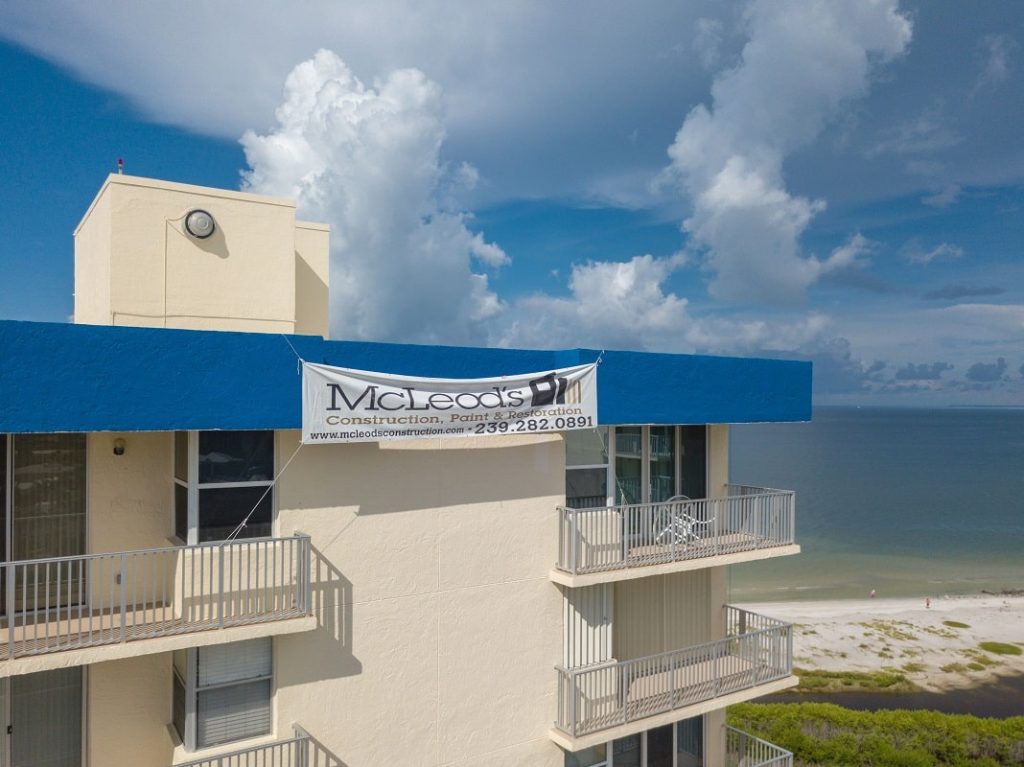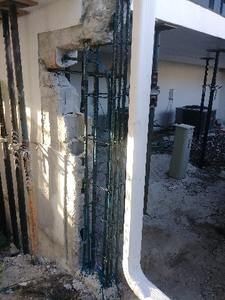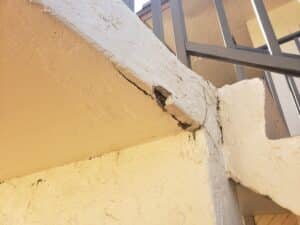Commercial high-rise painting projects are complex undertakings that require careful consideration, planning, and execution to ensure long-lasting, visually appealing results. Serving both functional and aesthetic purposes, a high-quality paint job can protect your building from weather damage, prevent corrosion, improve energy efficiency, and increase property values.
By taking the time to understand and implement these critical steps for your commercial high-rise painting projects, you can guarantee beautiful and durable results that leave a lasting impression on both residents and visitors while preserving the structural integrity of your building.
For your upcoming commercial high-rise painting project, trust the skilled team at McLeod’s Contracting Solutions. Our professional and detail-oriented approach guarantees exceptional results tailored to your building’s specific needs.
Thorough Planning and Preparation
The success of a commercial high-rise painting project begins with careful planning and preparation. Consider the following factors during this critical stage:
1. Scope of Work: Identify the areas that require painting, such as exterior walls, balconies, or common spaces. Determine if there are any special requirements, like matching existing colors or addressing specific maintenance concerns.
2. Budget and Timeline: Establish a clear budget for the project, factoring in labor, materials, and equipment costs. Set a realistic timeline that accounts for factors like weather, building access, and potential unforeseen issues.
3. Permitting: Research local permitting requirements for commercial high-rise painting projects, ensuring compliance with all relevant laws and regulations.
4. Safety Measures: Plan for proper safety measures, such as scaffolding, harnesses, and barricades, to protect both workers and building occupants during the project.
Selection of High-Quality Materials and Paints
The right materials and paints can make all the difference in the longevity and appearance of your commercial high-rise painting project. Consider the following when selecting products:
1. Performance Requirements: Choose paints that deliver exceptional resistance to weather, UV rays, and other environmental factors common in Florida.
2. Compatibility: Make sure the paint is compatible with the surfaces being painted, such as concrete, stucco, or metal. This ensures optimal adhesion and performance.
3. Aesthetics: Select colors and finishes that are visually appealing while still meeting the functional needs of the project. Consider factors like building style, surrounding architecture, and local color preferences.
4. Environmental Impact: Opt for low-VOC (volatile organic compound) paints that minimize harmful emissions and contribute to greener building practices.
Proper Surface Preparation and Repair
Thorough surface preparation is critical for ensuring optimal paint adhesion and long-lasting results. Follow these steps for proper surface preparation:
1. Cleaning: Remove dirt, debris, mold, and mildew from the surfaces to be painted using power washing or other appropriate cleaning methods.
2. Inspection and Repair: Inspect the surfaces for damage, such as cracks, spalling, or corrosion, and perform necessary repairs to ensure a smooth and structurally sound substrate for paint application.
3. Surface Preparation Techniques: Depending on the building material and condition, utilize the appropriate surface preparation methods, such as scraping, sanding, or abrasive blasting, to achieve the desired surface profile.
4. Priming: Apply a suitable primer to promote adhesion, even paint coverage, and enhanced durability.
Effective Paint Application Techniques
Employing the correct paint application techniques is crucial to achieving a professional, seamless finish on your commercial high-rise painting project:
1. Equipment Selection: Choose the right painting equipment, like brushes, rollers, or sprayers, suitable for the specific application and paint product being used.
2. Weather Conditions: Be mindful of weather conditions, avoiding painting during extreme temperatures, winds, or rain that can negatively impact paint adhesion, drying, and overall performance.
3. Multiple Coats: Apply multiple coats of paint as needed, allowing appropriate drying times between coats to ensure even coverage and desired finish.
4. Quality Control: Inspect the paint application for any inconsistencies, such as drips, streaks, or uneven coverage, and correct them before the paint has dried.
Conclusion
Successfully executing a commercial high-rise painting project requires meticulous attention to planning, material selection, surface preparation, and application techniques. By following these essential steps, you can ensure a visually stunning and long-lasting result that enhances the appearance and value of your property.
Partnering with experienced general contractors like McLeod’s Contracting Solutions ensures your project benefits from specialized knowledge, certified expertise, and a dedication to quality workmanship. Trust in our team’s ability to provide customized solutions for your commercial high-rise painting needs while prioritizing safety, efficiency, and customer satisfaction.
Contact McLeod’s Contracting Solutions today to discuss how our commercial painting services can elevate the look, longevity, and value of your commercial high-rise property. With our skillful approach and commitment to excellence, you’ll enjoy a beautiful, durable paint job that reflects your community’s pride and preserves the integrity of your building.







